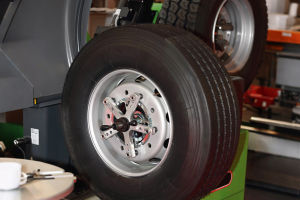When thinking about a next vehicle, does the idea of visiting a showroom feel more exhausting than exciting?
Technology has transformed how vehicles drive, connect, and look, yet the way many people still buy them feels slow, opaque, and outdated.
This gap between cutting-edge cars and clunky buying journeys is exactly where innovation now needs to move.
Digital Gap
Global research into recent car purchases shows a persistent satisfaction problem.
Only about half of buyers describe their latest experience as truly satisfying, and in some major markets, the number drops well below that. Even more revealing, fewer than half feel that the process has improved compared with nearly a decade ago, despite massive investment in vehicle technology.
The weakest link is often the early “awareness” stage.
This is when shoppers explore brands, become inspired, and narrow choices. Yet many say this phase disappoints them the most. Confusing information, fragmented online and offline steps, and little personalization all contribute to a sense that the process has not kept up with the vehicles themselves.
Why Experience Matters
Customer experience is no longer a “nice extra.”
In surveys conducted by leading consulting firms and automotive analysts, over four in ten buyers now rank the overall experience as the single most important factor when choosing a car. Poor interactions can outweigh strong specifications, attractive design, or even competitive pricing.
For manufacturers and retailers, this means that sales, loyalty, and reputation are built or broken in the journey, not just in the product. A buyer who feels pressured, confused, or ignored is unlikely to return—no matter how impressive the vehicle’s range, power, or comfort may be.
Three Key Technologies
Experts highlight three technology pillars that can completely reshape the car-buying experience:
Direct-to-consumer (D2C).
In markets where regulations allow, manufacturers can sell directly online while using partners as product specialists and delivery hubs. This model simplifies pricing, limits haggling, and enables consistent offers across digital and physical touchpoints, while also giving manufacturers rich data on customer behavior.
Generative AI (GenAI).
While AI already powers driver-assistance systems, it can also transform marketing and sales. By combining usage data from connected vehicles with purchase history and browsing behavior, GenAI can surface highly targeted offers, anticipate preferences, and power conversational assistants that answer questions in natural language around the clock.
Augmented and virtual reality (AR/VR).
Advances in AR/VR now allow highly realistic 3D product exploration. Prospective buyers can “sit” inside a model, examine trims, or simulate different conditions, all without visiting a physical location. This immersive capability makes complex configuration choices easier and more engaging.
Living Room Showroom
When these technologies are combined, the result can be a “pop-up store” in the living room. Using VR, customers step into a virtual showroom where they can walk around different models, switch exterior colors instantly, test interior trims, and see accessories in context.
Instead of a quick spin around a block, a virtual test drive can simulate hills, wet roads, busy city streets, or quiet highways. Customers explore at their own pace, at any time, and without the pressure that sometimes accompanies in-person visits.
Distinct Advantages
A GenAI-enabled assistant can accompany the entire journey.
It can suggest models based on commuting distance, passenger needs, charging possibilities, or budget. It can explain technology packages in plain language, recommend all-wheel-drive for certain climates, or highlight safety options for young families.
The same assistant can also lay out financing choices clearly, compare leasing versus purchasing, and show recent price trends to build trust. With a few clicks, the customer can place an order or book a physical test drive, turning an exploratory session into a seamless transaction.
More Use Cases
The “virtual pop-up” is only one direction.
Specialists in digital retailing also point to interactive product-testing communities, where customers earn points for completing virtual driving tasks and sharing feedback. The highest-engaged participants might be invited to drive early prototypes, giving manufacturers rich insights while building deep loyalty.
Convenient test drives represent another powerful idea.
Before a launch, a brand can place vehicles in high-traffic locations and allow passersby to schedule drives instantly via an app. During the drive, AR glasses or an in-car digital guide highlight key features, while a smart assistant answers questions. Afterward, the driver receives a short personalized video and key stats such as route, efficiency, and usage patterns.
Business Payoff
Analyses of thousands of companies by major consultancies show that automotive firms embracing immersive digital sales tools clearly outperform slower peers. Only a small minority have fully adopted these experiences so far, yet those pioneers achieve stronger growth and shareholder returns.
At the same time, digital-first sales models reduce structural costs.
Traditional showroom networks and broad, mass-market advertising are expensive and difficult to scale efficiently. In contrast, D2C and app-based journeys add volume without sharply increasing sales and marketing expenses, leading to savings of several thousand dollars per vehicle for mature digital players.
Next Moves
Precision matters as much as creativity. With better data and AI-driven insights, manufacturers can target campaigns at customers who are actively in the market, personalize content, and reduce spending on generic promotions. The effectiveness of each campaign can be tracked in far greater detail, allowing continuous refinement of budgets and messages.
Industry experts widely agree: in a market where vehicles often share similar performance and features, experience is the new battleground. Buyers already expect digital tools to be at the center of the process, yet very few view current buying journeys as truly modern. The brands that act now can still claim a strong advantage.
Conclusion
Innovation has reshaped the vehicle itself, but the way people buy those vehicles is only beginning to catch up. Direct-to-consumer models, GenAI, and AR/VR offer manufacturers a way to create truly customer-centric journeys while also lowering sales costs and strengthening performance.
As the next purchase is considered, what would make the process genuinely enjoyable instead of stressful? Which digital features—virtual showrooms, smart assistants, instant test-drive booking—would matter most in a future car-buying experience, and why?


